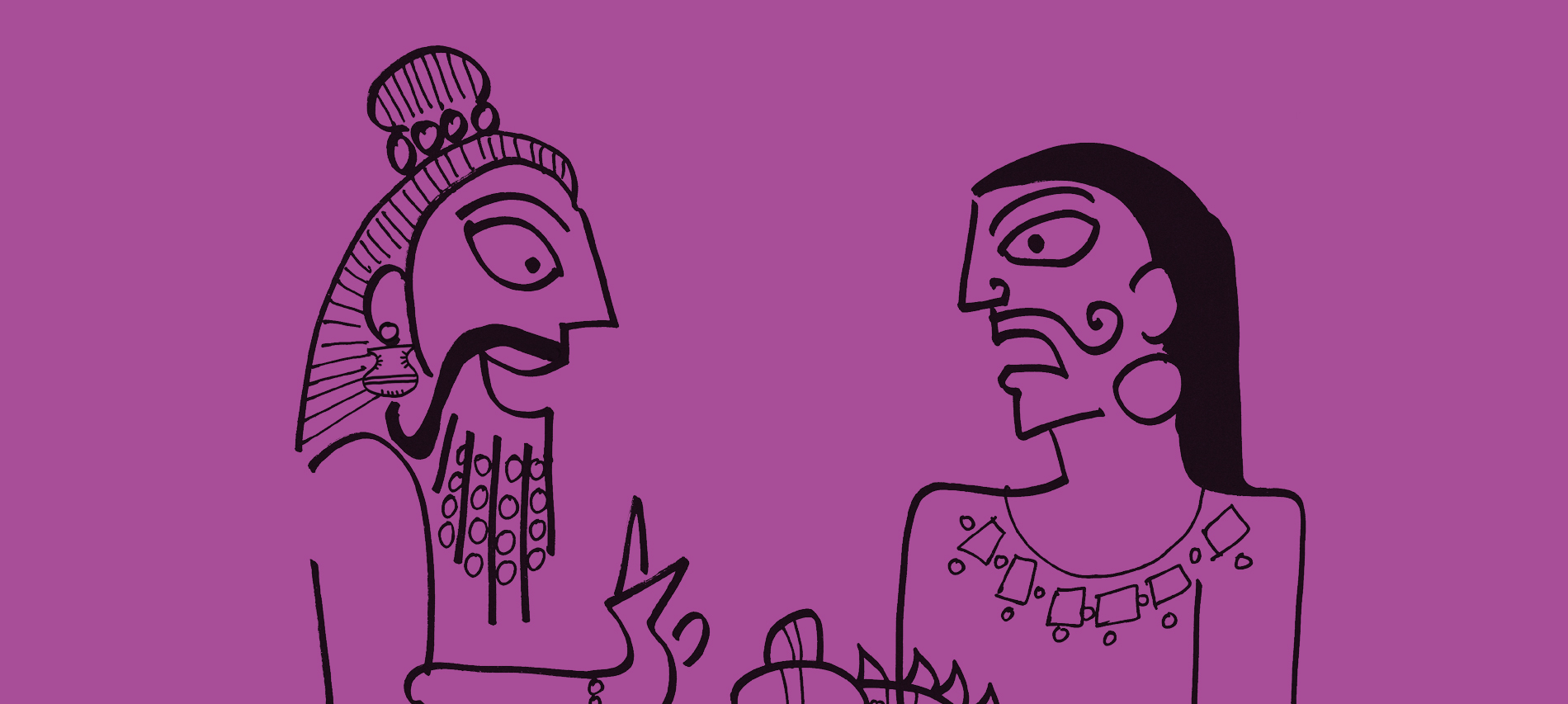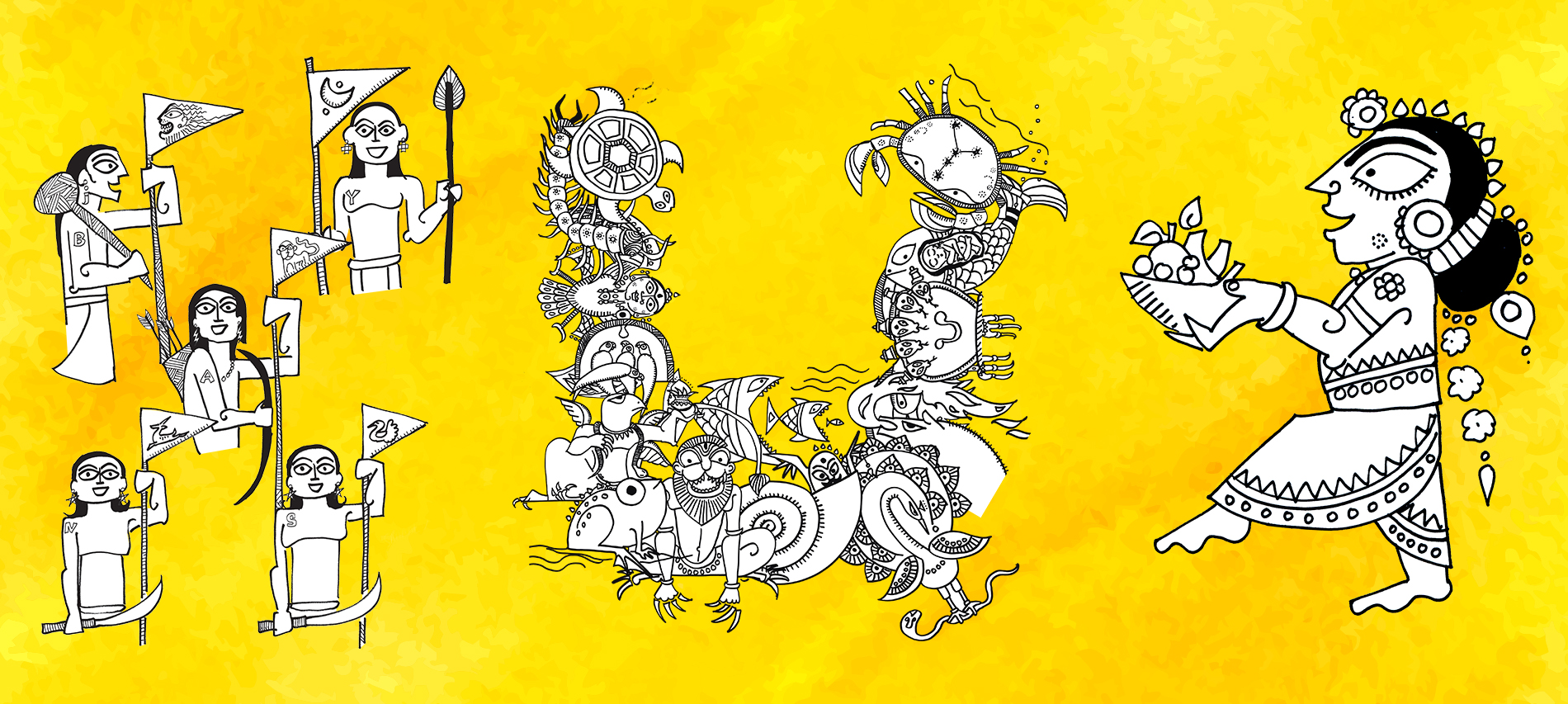Mahabharata is one of the major Sanskrit epics of ancient India. It has been retold in various locales, and in many histories. Devdutt Pattanaik in The Boys Who Fought retells the story of Mahabharata, the significant Kurukshetra War, and fates of Pandava and Kaurava princes in a charmingly illustrated form.
Here are a few significant facts on the Mahabharata and its episodes






How many of these facts did you already know?

Tag: The Boys Who Fought
The Simple Messages Hidden in ‘Mahabharata’: ‘The Boys Who Fought’
The story of Mahabharata has been retold countless times through generations and one instinctively comes to identify it with the great battle of Kurukshetra.
But going beyond all the animosity and rivalry that overarches the epic, Mahabharata espouses some important messages for life, an aspect Devdutt Pattanaik has brought forth for us in The Boys Who Fought.
Here are a few times we were reminded of the simple but impactful messages from the Mahabharata that transcend time and remain equally relevant even today.
When Vyasa wondered about the progress humankind had truly made.
When Ekalavya showed us the meaning of control, as opposed to destruction.

When we were reminded of the true meaning of ‘life’.

When we were told about the vicious cycles humankind gets trapped in.

Know more about the timeless messages of the Mahabharata with Devdutt Pattanaik’s beautifully illustrated book today!

'A Very Long Epic': 'The Boys Who Fought' — An Excerpt
When an army of five fights against a battalion of a hundred, what happens? Devdutt Pattanaik’s ‘The Boys Who Fought’ looks at the Mahabharata not as an epic war for revenge, but one for the cause of dharma.
Here’s an excerpt from Pattanaik’s Mahabharata with a twist.
Once upon a time, there was a man called Vyasa. His father was a sage. His mother was a fisherwoman. He was born on a river island, and had a dark complexion.
Vyasa grew up watching animals fight. Then he saw humans fight. And he wondered, what was the difference?
In the forest, the mighty eat the meek. In human society, the mighty can take care of the meek. This is dharma, realized Vyasa. It creates a decent human society.
Inspired, Vyasa wrote an incredible story in 1,00,000 verses, split into eighteen chapters, about the fight between a hundred brothers and their five cousins.
Ganesha, who has the head of an elephant, wrote down Vyasa’s story, which became renowned as the Mahabharata, the great Indian epic, for Bharata is another name for India.
Others called it Bharata Kavya, the song of the Bharatas, for the hundred brothers and their five cousins belonged to the Bharata clan, also known as the Kuru clan, which once ruled over India.

Some people called the story Vijaya, the story of victory, for it describes how the Pandava five, with just seven armies, defeated the Kaurava hundred, with eleven armies, in an eighteen-day-long war.
Vyasa, however, insisted that his epic should be called Jaya, a victory in which no one was defeated. For, in the story, Krishna of the Yadu clan, cousin to both the Pandavas and the Kauravas, reveals a different kind of fight—a greater fight that takes place before weapons are raised on the battlefield, a fight of thoughts and emotions that arises inside our minds and hearts.

Can’t wait to read more? ‘The Boys Who Fought’ is coming soon!

Have You Introduced Your Child to Devdutt Pattanaik’s Mythological Stories with a Twist?
Hailed as one of India’s favourite mythologists, Devdutt Pattanaik’s books introduce us to the world of Indian mythologies and epics with a fun and interesting twist.
Before you wonder how you’ll take on the difficult task of getting your child to remember the countless stories from our epics, let’s look at the wonderful world of some of Devdutt Pattanaik’s books.
Fun in Devlok Omnibus

Do you know the name of the demon with poor memory? Do you know the story of the time Lord Krishna landed at the airport? Have you heard of the big fight between Kama and Yama? Dive right into the amazing world of Devlok with this beautifully illustrated book!
Pashu

In Indian mythology, a fish rescues the world from destruction and a horse can fly high. But where do these animals come from? Why are some of them looked upon with dread, while the rest are worshipped with the Gods and Goddesses? Devdutt Pattanaik unravels the mysteries of the interesting animal world in Indian mythologies in this delightfully illustrated book!
The Girl Who Chose

The epic of Ramayana has been told and retold through generations from the points of view of Ram and Ravana. But little did we notice that the pivot always was Sita and her five choices. What were they? Find out with Devdutt Pattanaik’s beautiful book with stunning illustrations!
If you’ve plunged right into the fascinating world of Devdutt Pattanaik’s books, here’s one more about the Mahabharata waiting for your collection!










